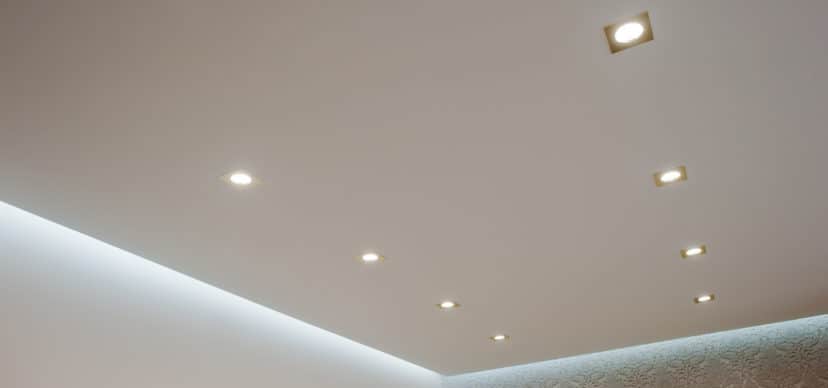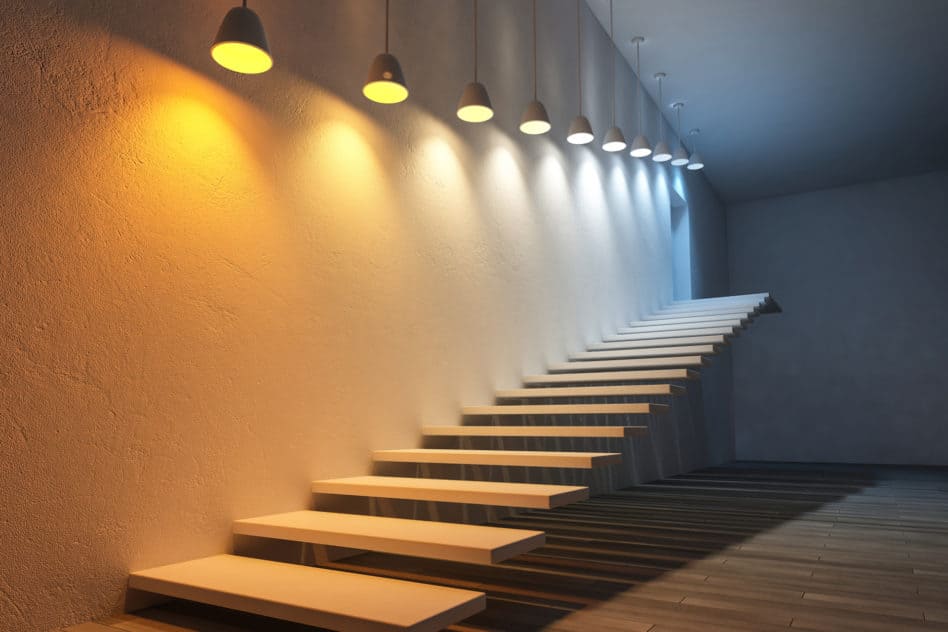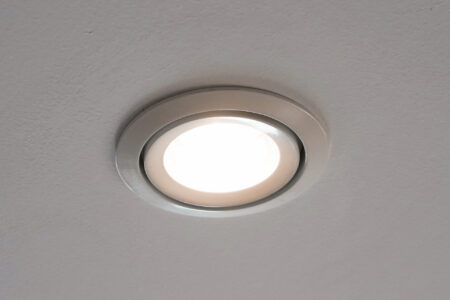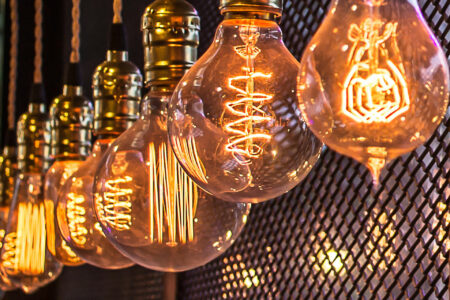Many LED lights are available in two versions: In a line-voltage version for direct operation on the 120V mains supply and in a low-voltage version for operation on a 12V transformer. This article shows you in detail when you should use which of the two technologies.
Line voltage or low voltage?
Line-voltage and low-voltage technology exists much longer than LED technology. Even the old incandescent bulbs were available in both versions. With the introduction of LED lighting both variants are still available. However, LED lights have many advantages compared to old incandescent bulbs. Meanwhile there are now many light sources and luminaires in a high-voltage and low-voltage version available.
120V or 12V?
Sometimes 120V and 12V are mentioned instead of line voltage and low voltage. This is the indication of the operating voltage for the respective LED light. Line-voltage LEDs are operated with 120V mains voltage. Low voltage LEDs are mostly operated with a voltage of 12V.
What means line voltage?
LED lights in the line voltage version can be operated directly with the mains voltage of 120 volts, which is usual in the US. The term line voltage is used for alternating voltages in the range of 30 to 1,000 volts. The term line voltage has nothing to do with high voltage. A high voltage is usually referred to as an alternating voltage of 1,000 volts or more.
What means low voltage?
Low voltage LED lights are mostly operated with a voltage of 12V. Depending on the lamp or luminaire, both a DC voltage (DC) or an AC voltage (AC) may be required. This voltage is usually generated by a transformer from the 120V mains supply.
The term low voltage is the colloquial term for a extra-low voltage. Nevertheless, the term low voltage is generally used to distinguish it from line voltage technology.
There is also a range of low voltage LEDs with an operating voltage of 24V. The only advantage over the widely used 12V lamps is a lower power loss with long cable runs between transformer and light source. However, this is not an issue for most home installations.

Pros and cons of both technologies
There are many LED lights in line voltage as well as in low voltage version available. Both emit the same light. When should you choose which variant? In many cases it makes no difference, but in some situations the technologies have advantages and disadvantages.
Line voltage pros
Line voltage LED lights have their own integrated power supply unit and can be operated directly with the mains supply. No extra transformer is needed. When converting to LED, the old lamps can simply be replaced with retrofit LEDs.
- No transformer required
- Simple conversion to LED
Line voltage cons
Line voltage LED lights have a higher power dissipation than the low-voltage version due to the integrated power supply unit. This results in higher waste heat, which can be a problem depending on the installation situation. In small lamp glasses or recessed spotlights, heat accumulation reduces the lifespan of the LED. With 120V mains voltage, all safety regulations must be observed during connection and operation.
- More power dissipation/waste heat
- Higher safety requirements
Low voltage pros
Low voltage LED lights normally contain only the LED and its driver. Due to the missing integrated power supply there is little power dissipation and a very high efficiency can be achieved. Especially for installations with several spotlights, a central power supply is usually the more appropriate option. Operation with 12V low voltage is harmless and preferable for cable systems or wet rooms.
- Lower power dissipation/waste heat
- High efficiency
- Non-hazardous voltage
Low voltage cons
All low voltage LED lights require a suitable LED transformer for operation. This is not necessarily a disadvantage, but it only makes sense for installations with several LEDs or spotlights. The transformer should match the performance of the light installation, otherwise the high efficiency of the individual LEDs will be wasted in the transformer.
- Transformer required
- Higher planning effort
When to choose which technology?
The previous section has shown that neither line-voltage nor low-voltage technology is better in general. But depending on the situation, one or the other variant is recommended.
Existing installations
When converting existing installations to LEDs, it is recommended that the previously used voltage variant is retained. The advantage is that you can continue to use the cabling. Only the lamps or spotlights need to be replaced. For low voltage installations, the transformer may also need to be replaced with an LED power supply to avoid problems such as flickering or flashing.
DC or AC voltage
Some low voltage LED lamps require 12V DC voltage, others require 12V AC voltage. Most of the LED lamps have an integrated rectifier and can be operated with both DC and AC voltage. Please note that when operating with 12V AC, additional rectifier losses will occur. A power supply with 12V DC is preferable.
LED spots and recessed lights
With LED recessed lights and ceiling spots, the decision for line-voltage or low-voltage technology is the most difficult. For safety reasons, some electricians recommend LED recessed spotlights in low-voltage technology for wet rooms such as bathrooms. The transformer should then also be installed outside the room. Low-voltage spotlights are expected to have a longer lifespan due to their lower power dissipation.
If many spotlights with high luminous power should be installed to illuminate larger rooms, the line-voltage version is more recommended. In contrast to the 12V version, the line losses are not significant with 120V mains supply.






